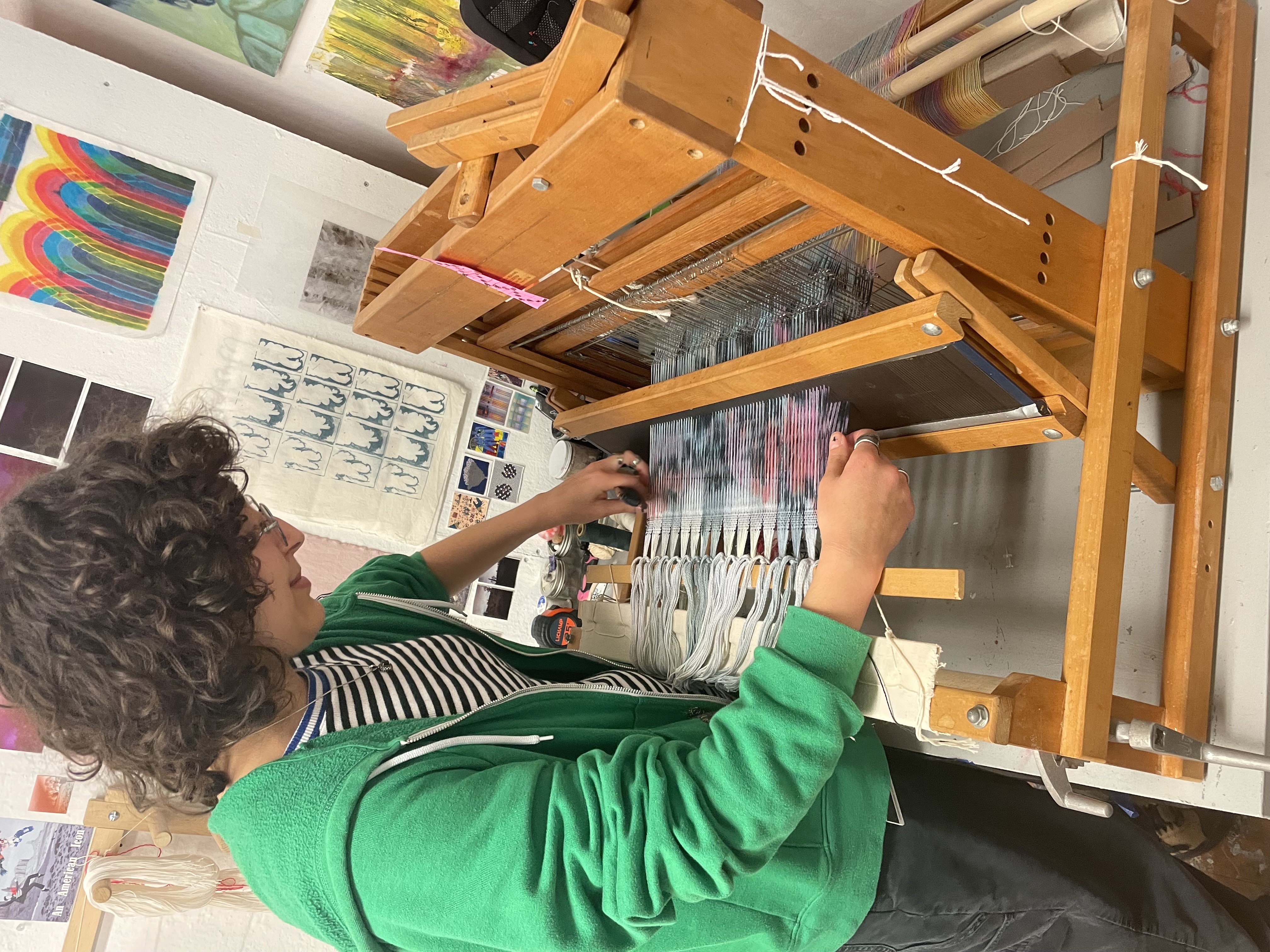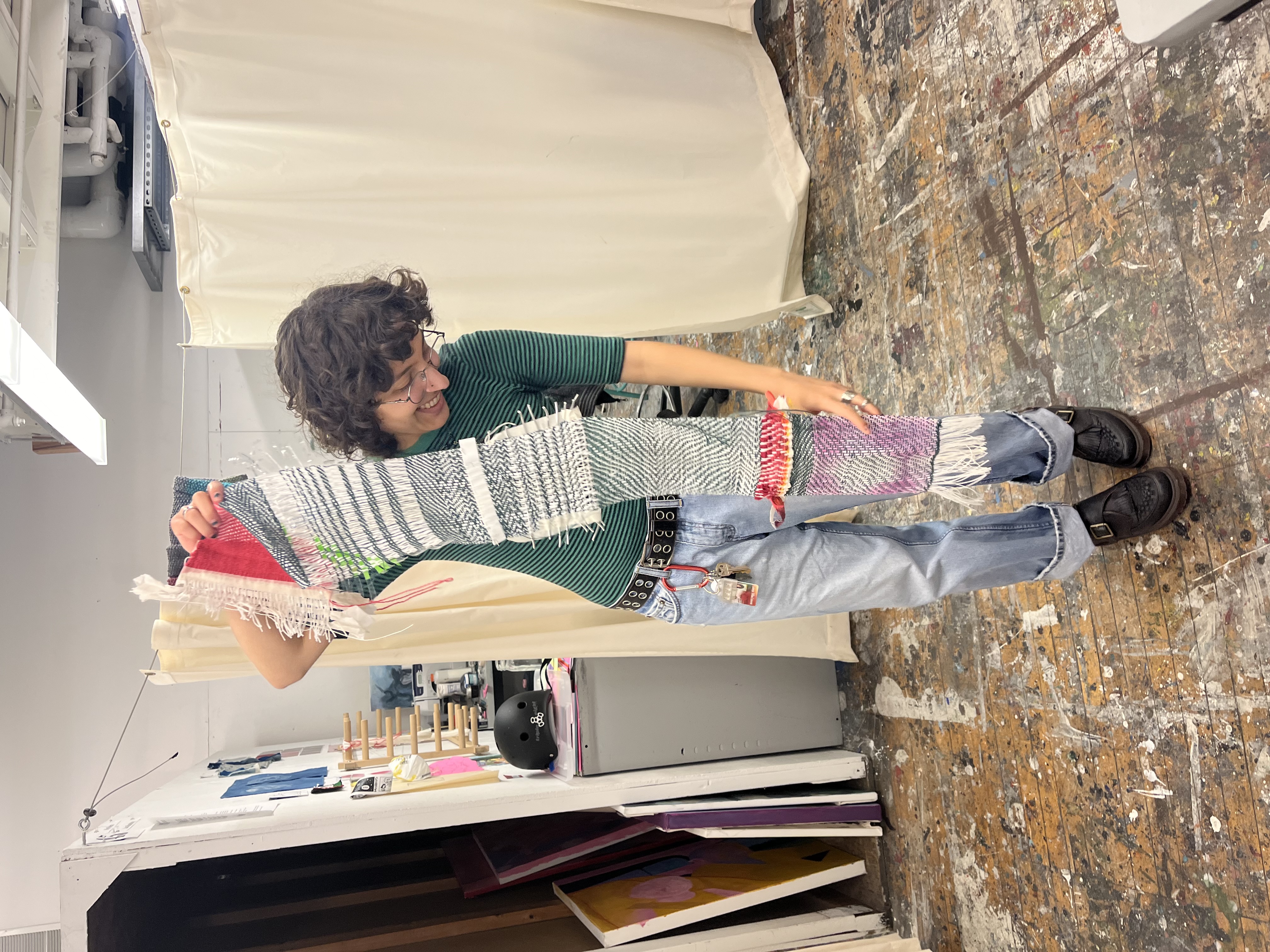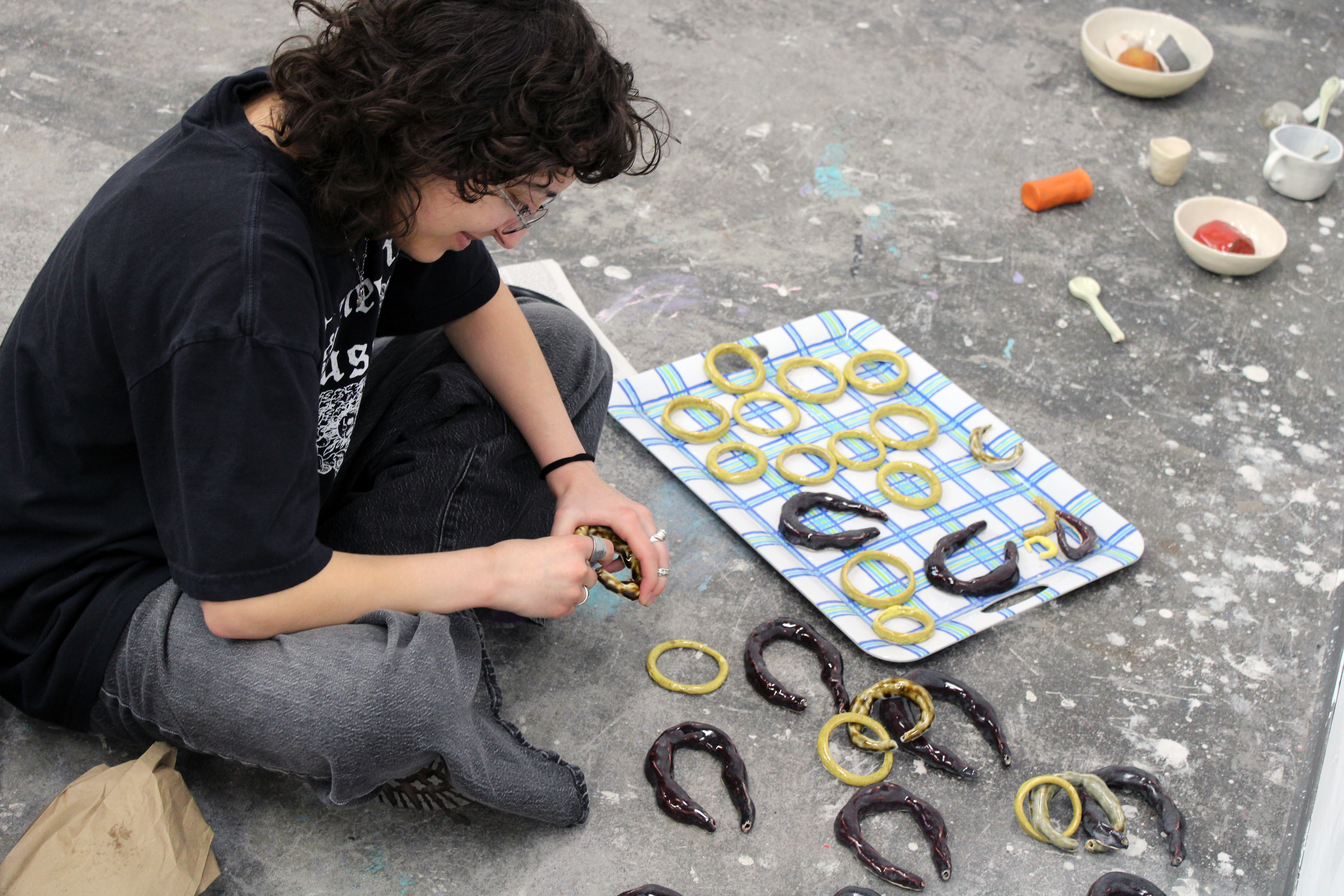
Expanding Horizons
By embracing soft technologies, rising senior Luca Budofsky takes their art to the next level
By Sarah Elizabeth Bender
Rising College of Fine Arts senior Luca Budofsky came to Carnegie Mellon to pursue a degree in art.
Skilled at painting and drawing, they were also interested in craft and sewing, and wanted to incorporate textiles into their art practice. As a result, they were excited to learn that IDeATe’s soft technologies classes offered opportunities to explore fabric dyeing, weaving, and more — but enrolling in IDeATe courses meant they’d have to engage in classwork focused on chemistry and robotics, too.
“I was skeptical of the science and technology element at first — I was an art major, and I wanted to do art things,” Budofsky admitted. “But the technology part of the classes quickly became more interesting, and soon opened up entirely new ways of creating.”
Art and Technology, Hand in Hand
 As Budofsky dove into IDeATe classes, they soon learned that textile production is inseparable from the technologies used to make them.
As Budofsky dove into IDeATe classes, they soon learned that textile production is inseparable from the technologies used to make them.
The class Re-Crafting Computational Thinking with Soft Technologies, which they took this spring, is a perfect example of the way a technology can impact an artistic work. In the class, taught by Entertainment Technology Center Teaching Professor Olivia Robinson and Robotics Institute Assistant Professor Melisa Orta Martinez, students build and program robotic looms, exploring how weaving is connected to computer programming and matrix mathematics.
“For the final, my group got very invested in the optical things you can do with colors and where you place them within your woven structure,” Budofsky said. “We were very excited to look up different kinds of heat-sensitive threads, and brainstorm ways to transform traditional weaving techniques by creating fabrics that react with heat or light to reveal hidden images.”
Thinking Outside the Box
Working with students from different backgrounds and skill sets helped Budofsky quickly become comfortable with the more technical side of classes.
 Culture of Color, the very first IDeATe class they took during their sophomore year, was divided into lectures, project creation, and lab work. They had to get used to working in a lab setting, which they found tricky at first — until they started working in groups and collaborating with people from more technical backgrounds who were willing to share their experience.
Culture of Color, the very first IDeATe class they took during their sophomore year, was divided into lectures, project creation, and lab work. They had to get used to working in a lab setting, which they found tricky at first — until they started working in groups and collaborating with people from more technical backgrounds who were willing to share their experience.
“In the School of Art, there are avenues for working with different mediums independently. But when you’re collaborating with people with different skill sets, you see exciting ways that people use materials for different ends,” Budofsky explained. “In classes for my major, there are technical elements, but if you’re learning technical skills in fine arts it’s typically to further an art practice. Students from computer science or engineering are going to incorporate these skills in different ways.”
Elevating the Practice
Through IDeATe, Budofsky has also become involved in community projects that use art as a way to connect with and improve the lives of others. Last year, they worked with Robinson on a project organized by Let’s Get Free: The Women and Trans Prisoner Defense Committee. Along with more than 30 others, they contributed to a large community quilt that was displayed at the Irma Freeman Center for Imagination, where it was later auctioned off to raise money for the organization.
“It was incredible to create alongside people from the broader community, working together on such a large project in solidarity with incarcerated people,” they recalled. Looking ahead, Budofsky wants to find new ways to incorporate a community component into their own practice.
In the meantime, they plan to take advantage of IDeATe classes and spaces during their senior year. They want to dive even deeper into the ways fibers can shape the way they conceptualize and break down surfaces in their art, and explore how new technologies can add additional dimensions.
“IDeATe has transformed my academic experience, and I always recommend people explore IDeATe courses in whatever they’re interested in,” Budofsky said. “Campus can be a siloed environment, and it’s so nice to have a place where the ultimate goal is to help everyone relate and respond in a broad and accessible way.”

Visit Budofsky’s portfolio website to see more of their work.